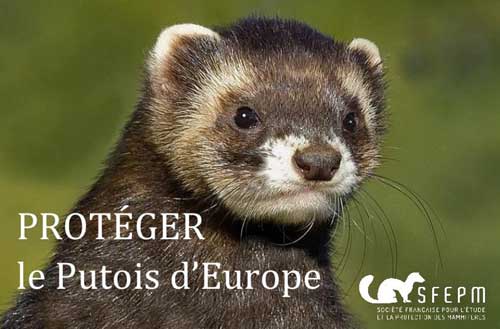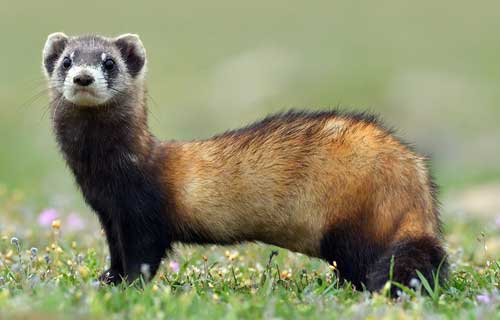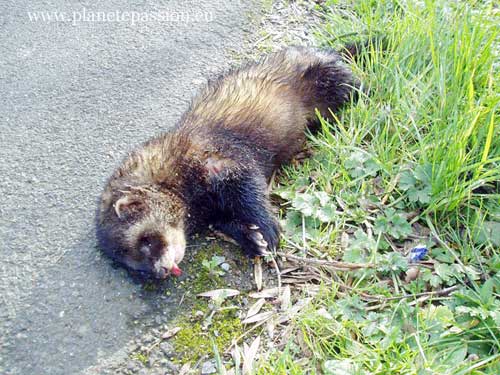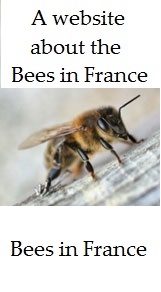

Polecat -
Mustela putorius – Putois
The polecat
Mustela putorius is a native
European mammal and a member of the mustelid (weasel) family. They are a
similar size to a ferret, with a long slim body, dark fur and a
‘bandit-like’ mask of dark and light fur on its face although colour and
markings vary with individuals and with the seasons. Males are some 30%
larger than females.

Although they are a solitary animal they
aren’t particularly territorial and members of the same sex will often share
the same territory. They are well known for having the characteristic
ability to secrete a particularly foul-smelling liquid to mark their
territory. Polecats are polygamous, with each male polecat mating with
several females. The mating period is in early spring and 5 to 10 kits are
born about 40 to 45 days following copulation. Weaning begins at around
three weeks but it is some 3 to 4 months before the young achieve full
independence.
They use burrows
that they dig themselves or they find the disused burrows of other species
or perhaps cavities in stone walls or deep hollows in tree trunks. A single
Polecat will often have a number of different burrows or cavities on its
territory that it makes use of.
Natural habitat tends to be centred on
wetlands, rivers, canals and lakes where their food consists mainly of frogs
and voles, but sometimes rats, birds or other small prey. It is one of the
rare predators to gather prey (mainly frogs) in "food reserves" in the
spring. One of the favoured prey is often considered to be rabbits that they
catch in their burrows but this tends to be a summer diet. Occasionally they
will attack young hares. Birds such as Partridge that spend the night on the
ground make easy pickings.
They have no serious natural predators other
than foxes and some birds of prey.

Population status:
In the North East of France the polecat seems to be more populous than in the other regions but the state of the populations aren’t well known.
In the
In
In
In
Pays-de-la-Loire, they are not very common and probably declining.
In
Center-Val-de-Loire, it is common to rare and in probable decline.
In the Grand-Est, (the old regions of
In
Auvergne-Rhône-Alpes, they are rare and in decline.
In Nouvelle
In Occitanie,
(the old regions of Languedoc-Roussillon and Midi-Pyrénées), they aren’t
common and are in decline.
In Provence-Alpes-Côte
d'Azur they are very rare and declining.
It should be noted that
the available knowledge varies according to the region but it’s clear that
there is one thing in common: the Polecat is nowhere abundant. The weakness
of the population seems to be the result of a historic decline in the course
of the twentieth century which seems to be widespread in
The current situation as of Dec 2018 is that
the Polecat remains on the list of species that can be considered vermin or
liable to cause damages to livestock, specifically Partridge and poultry.
Given the decline
the Société Française pour l’Étude et la Protection des Mammifères are
requesting that the Polecat be given protected status.

Société
Française pour l’Étude et la Protection des Mammifères
9, allée
René Ménard 18000 BOURGES
Tél : 02 48
70 40 03
e-mail :
contact@sfepm.org
Site
Internet : www.sfepm.org



